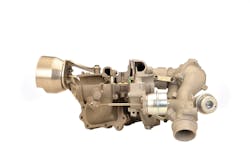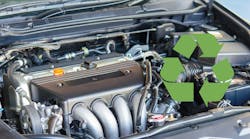BorgWarner’s award-winning regulated two-stage (R2S) turbocharging technology boosts performance while helping improve fuel efficiency and lower emissions for the first four-cylinder engine in the history of the Mercedes S-Class. The 2.2-liter diesel S 250 CDI BlueEfficiency is the first car in the luxury segment to consume less than 6 liters of fuel per 100 km.
"BorgWarner’s highly efficient turbocharging technology meets the highest demands in performance, fuel economy and emissions," said Frederic Lissalde, President and General Manager, BorgWarner Turbo Systems Passenger Car Products. "We are pleased to collaborate with Mercedes-Benz to set new benchmarks for powerful downsized diesel engines in the luxury segment without compromising performance."
To develop a state-of-the-art engine featuring low-end torque, responsiveness, high output and low emissions, Mercedes-Benz chose BorgWarner’s regulated two-stage turbocharging system for the new four-cylinder diesel engine. The compact R2S system consists of one small KP39 high-pressure exhaust gas turbocharger and one large K04 low-pressure exhaust gas turbocharger. The high-pressure turbine is first driven by the exhaust gas, revolving at up to 215,000 rpm. BorgWarner engineers integrated a bypass into the high-pressure turbine casting which allows the turbines to be controlled based on engine speed and generate optimum boost pressure over the entire engine speed range with excellent torque characteristics. The R2S turbocharging technology fulfills the requirements of state-of-the-art engine concepts, allowing maximum exhaust gas recirculation rates even under full load conditions while significantly reducing NOx emissions.
While still offering excellent dynamics, the engine provides its maximum torque from just 1,600 rpm in the S 250 CDI and achieves a fuel consumption rating of only 5.7 liters per 100 kilometers (41 mpg). This equates to CO2 emissions of 149 g/km (240 grams/mile).


